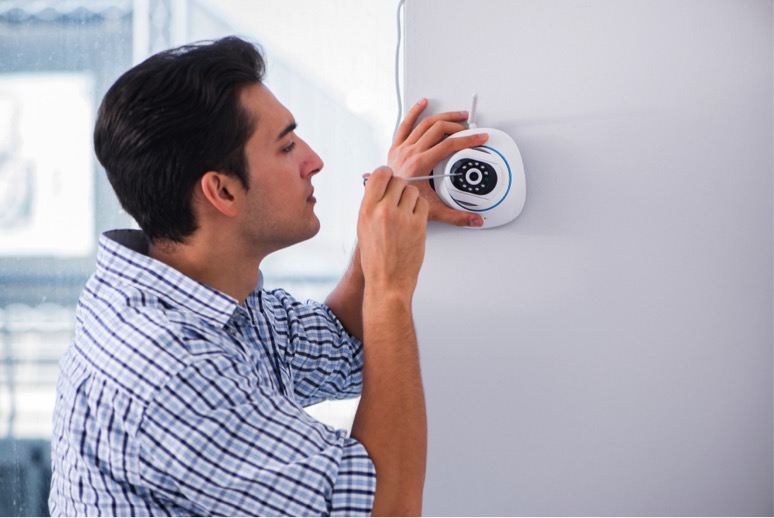
Our homes are our safe places, or at least we feel that way until something unnerving such as a burglary, act of vandalism, or an attempted break-in shatters that comfort.
Crime stats indicate a burglary happens every 13 seconds, and according to the FBI, burglars are most attracted to homes that do not have a home security system, but only 17% of houses have a system in place. So, if you have been thinking about adding a home security system to your property and/or a doorbell camera, now is a great time to move forward with those protection plans.
Give Fido and your neighborhood watch a break and join us as we show you the simple steps to ordering a security system online and even installing it yourself before the weather heats up:
Finding Your System Online
The first step in ordering your security system is to figure out what your home’s vulnerabilities are, so you know which one to buy. To do this make a quick perimeter plan addressing:
- All vulnerable entry points (such as windows or glass doors)
- Unsecured spots (garage doors or separate workspaces)
- Front and back door walkups
- Driveway or side storage areas
After completing this list, you will have a general idea of the minimum number of security cameras your property requires.
Weigh Your Coverage Options
Next, you will want to decide which features and options you want in place for your security. Things to consider include:
Indoor vs Outdoor
Are there a few places on the exterior of your home that could use monitoring or are your cameras going to be most effective watching what is happening inside? Outdoor cameras are a good fit if you need:
- A wide-angled lens to monitor large grass areas, street views, or parking spots
- Vandal-proof systems that may be placed within reach of potential criminals
- Rugged weather protection, long-range night vision, or thermal detection for superior nighttime monitoring
Placement for Outdoor Cameras
Ideal placement locations include near the front door to allow homeowners to see who is coming and going. As well as any windows or doors not facing the street or back door and garage entrances. And areas, where vehicles are parked, can be especially tempting to would-be thieves.
Placement for Indoor Cameras
Any room where high-value items are kept, as well as entryways. It is a good idea, especially if your camera is visible, to install it at the highest point possible to deter intruders from trying to reach it.
Power Capabilities
Depending on the area you are trying to monitor, it is important to consider what kind of power your cameras will need to do their job. Wireless cameras operate via being plugged into a power source whereas wire-free cameras work off batteries alone.
Resolution, Audio, and Lightning
Other factors to think about when purchasing your camera set-up is will you receive clear images from the resolution you have chosen or do you need a higher-definition video surveillance system? Is sound an important feature to you? If so, make sure your cameras have an audio option. Finally, lightning can play a huge role in picture quality as well. Indoor cameras will not be able to capture adequate outdoor footage, so it is better to find separate cameras for each area of surveillance.
Setting Up Your System
Properly installing your video surveillance system is the last step in creating a more secure home. It may seem daunting to attempt this on your own; however, companies specializing in home security usually have support videos showcasing the entire process from unboxing to installing.
The best advice when it comes to choosing your security system is to plan for your specific surveillance needs, ensure proper camera placement, and enjoy the peace of mind that comes with knowing you have added an extra layer of protection to your property.








Pingback: Four Tips To Secure Your New Home From The Start | My Beautiful Adventures